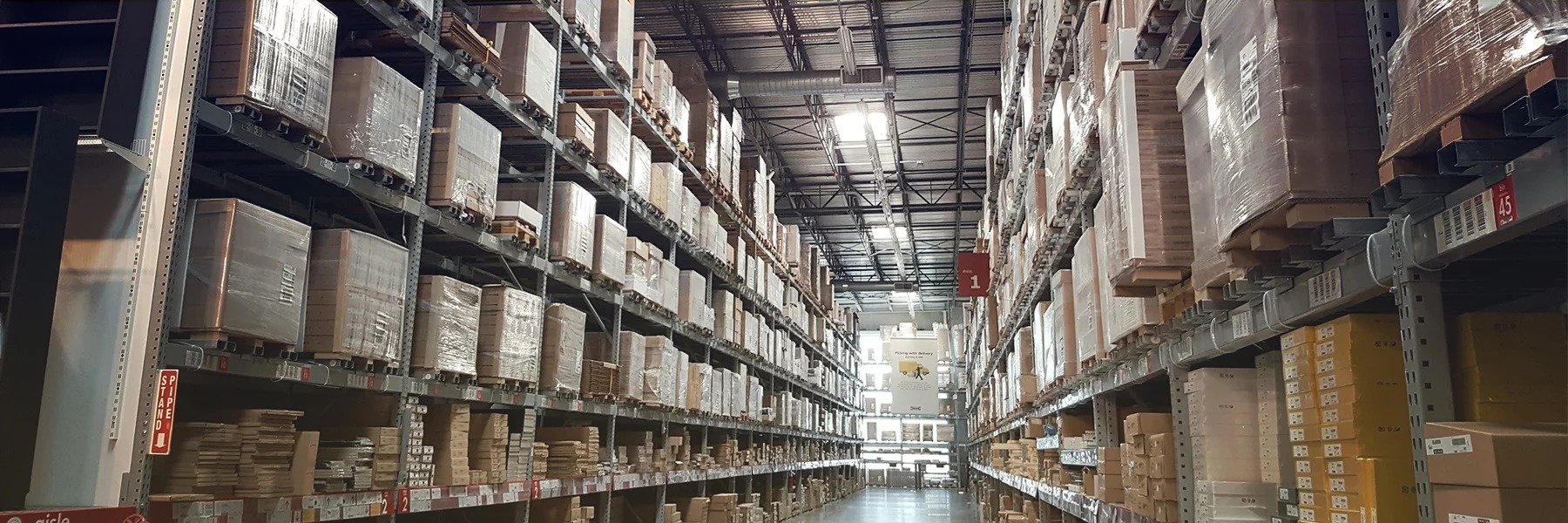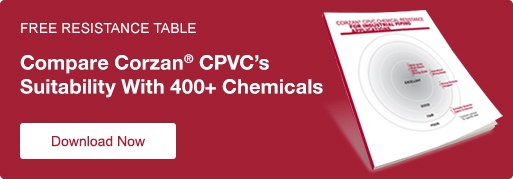WHAT CONSTRUCTION PRODUCTS ARE CHEMICALLY COMPATIBLE WITH CORZAN® CPVC?
Throughout the construction process, a number of the products used—such as thread sealants, gaskets and insulation—might come into contact with piping system components.
Each of these products includes its own unique chemical makeup that enables it to serve a specific function within the larger system. For example, gaskets combine polymers and lubricants to form a tight, long-lasting seal between flange fittings.
The challenge for engineers is certain chemicals, when in contact with a piping material (e.g. steel or CPVC), can weaken the material and cause premature failure. In other words, to ensure the longest life for your piping system, it’s important to select ancillary products that offer the greatest compatibility with your piping material.
Need to identify the products compatible or incompatible with Corzan® CPVC?
Understanding Compatibility
On a molecular level, CPVC is formed by the entanglement of long chain-like molecules. When a pipe, sheet or other CPVC material breaks, it means that enough of those critical chains have broke or disentangled.
CPVC disentanglement can be the result of mechanical stress or strong chemical effects.
- Mechanical stresses are physical traumas that can come from internal pipe pressure or installation issues—such as excessively tight hangers, poor joining, or bending from thermal expansion.
- Strong chemical effects are when incompatible chemicals disentangle the CPVC molecular chain through solvation, plasticization or some other chemical process. Very few chemicals achieve breakage through chemicals alone.
When a combination of mechanical and chemical stress causes failure, it is known as environmental stress cracking.
Few materials are considered completely compatible or incompatible. Most substances will fall somewhere between those two extremes.
For example, methanol would be considered a more incompatible material because it requires a lower added stress to cause failure. A chemical like ethylene glycol, however, requires a significant amount of stress to break the material, which means it is a more compatible chemical.
Determining Compatibility
The compatibility of all ancillary products—including thread sealants, firestopping materials, gaskets, pipe insulation—should be verified for compatibility with CPVC before use.
The FBCTM System Compatible Program was built to ease the burden on specifiers and installers when researching and selecting products that can be used with Corzan® CPVC and other Lubrizol CPVC brands.
Since the breakage of thermoplastics is dependent on multiple factors, all products listed undergo formulation screening and rigorous physical testing in contact with CPVC.
To qualify for inclusion in the program, each product must:
- Be tested by a third-party lab.
- Not have its formulation altered after the test.
- Have its manufacturing facility audited annually by the third-party lab.
Find Products Compatible with CPVC
Eliminate the guesswork and access the FBCTM System Compatible Program for a library of products listed as compatible or incompatible with Lubrizol’s Corzan CPVC systems.



